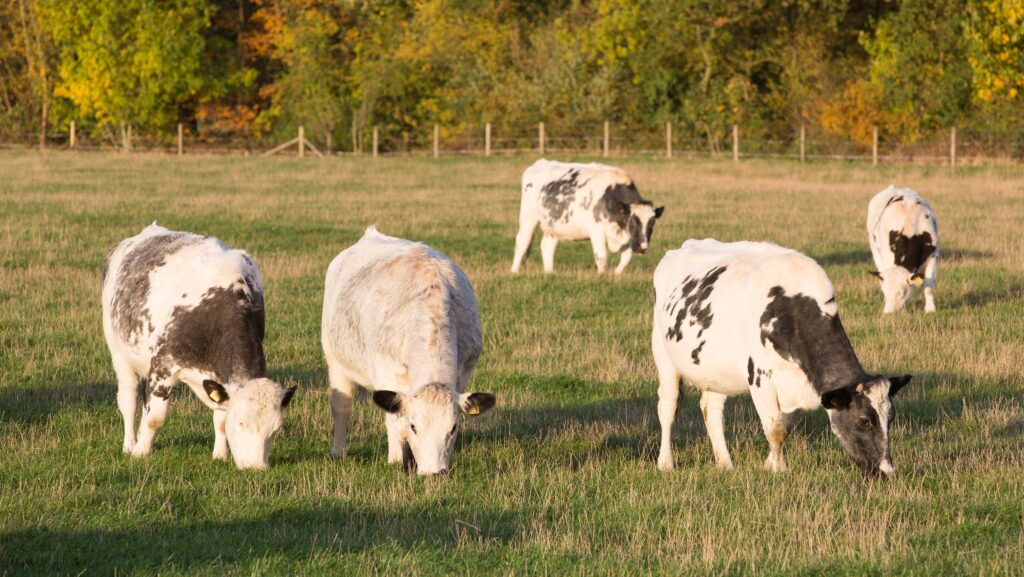Mild November offers grazing relief to livestock farmers
 © Tim Scrivener
© Tim Scrivener Cows are still grazing across much of England this November, as unseasonably mild weather keeps temperatures in the mid-teens and pastures green well into autumn.
The continued warmth has offered cattle farmers welcome relief after a dry summer that damaged forage stocks – a sharp contrast to last year, when rain forced many herds indoors by mid-September.
James Winslade, a fifth-generation beef farmer who runs West Yeo Farm in Moorland, near Bridgwater, Somerset, said the mild autumn had helped grassland farmers to “even things out a little bit” after the dry summer.
See also: How a forest grazing project doubled a suckler herd
He said that after a lot of maize was cut in his area, farmers started to take their maize headers off and cut late silage this autumn.
Not much nutrition
“The grass is still growing around here,” he said. “There’s not much nutrition in it so we are buffer feeding as well. The grass is a filler, but they’re not going to get too much from it. That is why we are feeding them silage and hay.
“The telehandler is doing more hours running around the fields with the feed, but we’re saving on straw and the water bill as they are drinking from the ditches.”
He added: “The cattle prices are good, but they need to be as it is expensive to keep them now that we have not got subsidies.
“We still have some silage over from last year, which we are using to feed them. We are using rain bale silage to feed them and we have got three pits of silage, so if we get a reasonably early spring we will be fine.”
Mr Winslade plans to house his cows towards the end of the month to allow them time to acclimatise before TB testing in December.
In Wiltshire, Liz Webster, who runs a mixed arable and beef farm with her husband near Swindon, said their herd of 300 beef sucklers was still out grazing in November, which is “very unusual”.
“Last year, we had to bring the cows in in mid-September when it started to rain,” she said. “This year, it’s a different story. It’s great as it’s saving us money we would have to spend on feeding them if they were inside.”
Late autumn grass growth
Further west, Emma Semmens, who farms at Brew Farm in Penzance, Cornwall, said the family’s small herd of 43 beef cows were also still outdoors.
“We had a decent spell of mild, settled weather in late summer and it’s carried on well into the autumn,” she said. “Our ground can dry out quite well because we have granite under us.
“We are monitoring the cattle daily and are ready to bring them in if needed. We have a flush of grass coming through and they are quite happy for now.”
David Christensen, a dairy farmer and Arla milk supplier based in Kingston Bagpuize, Oxfordshire, said his spring calving dairy herd was still out grazing during the day. “Today, it is 17C. It’s bonkers,” he added.
“But what we’ve got to wary of is the ground is still very dry when you go below five inches. At some point, it needs to start raining. Otherwise, we will be in a pickle again next year.”
Welsh view
Andrew Thomas, a dairy farmer based in Welshpool, Powys, Mid Wales, said although his cows were now indoors, several neighbouring herds were still grazing.
“There’s quite a few still making last minute cuts of silage,” he said. “Growth rates are higher now than they were in April.”
With the mild conditions forecast to continue into next week, farmers say the extended grazing period is helping to ease pressure on fodder supplies – a rare piece of good news in a challenging year.
Fodder concerns remain
However, a spokesman for Addington Fund, which incorprorates Forage Aid, described the late autumn grass growth as a “stay of execution” for many livestock farmers who suffered the conqsequences of a very dry spring and summer.
“We are concerned that livestock farmers who were unable to produce their usual quantity of fodder and bedding as well as those who had to start using these supplies two or three months earlier than normal – may soon run short.
“Their remaining stocks are unlikely to last through to the spring.”
